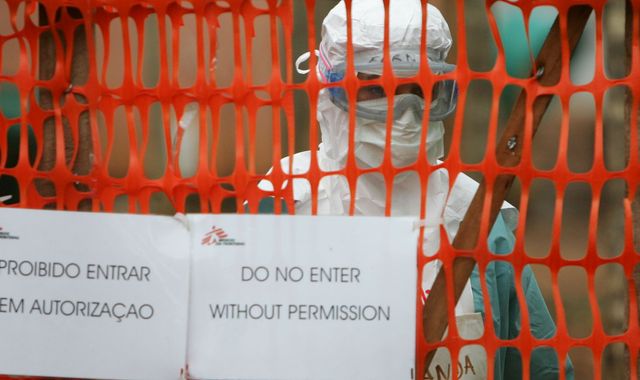Marburg is in the same family as Ebola and can cause death in up to 88% of cases.
The World Health Organization (WHO) said on Wednesday eight people have been killed from the virus in a remote part of the country.
The WHO chief Tedros Adhanom Ghebreyesus said that he expects “further cases in coming days as disease surveillance improves”.
Here’s everything you need to know about the deadly virus.
What are the symptoms?
Illness caused by Marburg virus begins abruptly, with high fever, severe headache and severe malaise, according to the WHO.
Severe watery diarrhoea, abdominal pain and cramping, nausea and vomiting can begin on the third day.
Within a week, many patients develop severe haemorrhagic symptoms, which could include bleeding under the skin, in internal organs, or from orifices such as the mouth, eyes or ears.
In fatal cases, death normally occurs on day eight or nine.
How deadly is it?
Very.
According to the WHO, the average fatality rate is around 50% but as many as 88% of infected patients can die depending on the strain and infection management.
How does it spread?
The virus is transmitted to people from fruit bats.
It spreads among humans through direct contact with the bodily fluids of infected people or with surfaces and materials contaminated with these fluids, such as bedding.
The virus can also be spread through contaminated injection equipment, and this is associated with more severe disease.
People remain infectious as long as their blood contains the virus and burial ceremonies that involve direct contact with the body can also result in infection.
So how worried should I be?
The WHO said its risk assessment for the suspected outbreak in Tanzania is high at national and regional levels but low globally.
There has been no immediate comment from Tanzanian health authorities.
An outbreak of the virus in Rwanda first reported on 27 September 2024 was declared to have ended on 20 December.
Rwandan officials reported a total of 15 deaths and 66 cases, with the majority of those affected healthcare workers who handled the first patients.
In 2023, an outbreak in Kagera, which shares a border with Rwanda, killed at least five people.
There have been 15 outbreaks of Marburg between 1967 and 2022. Some involved just one or two cases, while the largest was the 2004 to 2005 outbreak in Angola, when 252 people were infected.
How is it treated?
There are no authorised vaccines or drugs to treat Marburg, but rehydration treatment to alleviate symptoms can improve the chances of survival.
Researchers are now racing to test experimental vaccines, with five vaccine candidates in the running that have shown promise in animal studies.





























